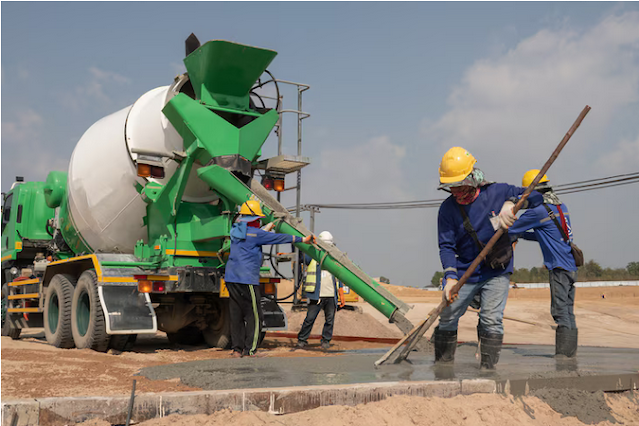Concrete Delivery Cost Breakdown: What You Need to Know
Concrete is a fundamental building material in the construction industry, used in a wide range of projects from small residential developments to large-scale infrastructure ventures. When planning a construction project that involves concrete, it's crucial to understand the cost breakdown of concrete delivery. This knowledge allows you to budget effectively and make informed decisions throughout the project. In this article, we'll explore the factors that influence the cost of concrete delivery, helping you grasp the intricacies and make well-informed decisions to ensure a successful and cost-effective project.
1. Concrete Mix Design
The first factor influencing the cost of concrete delivery is the mix design. Different projects require various concrete mixes with specific properties, such as strength, durability, and workability. The composition of the mix, including the type and proportion of cement, aggregates, water, and additives, directly affects the cost. High-performance or specialty concrete mixes typically come at a higher price due to the use of specific additives and the complexity of the mix design.
2. Order Volume
The volume of concrete you need for your project plays a significant role in the cost breakdown. Suppliers often offer volume discounts for larger orders, as the fixed costs associated with batching, transportation, and labor become more economical when spread across a larger quantity of concrete. In contrast, smaller orders can be more expensive on a per-unit basis due to the same fixed costs. Therefore, optimizing your order volume is crucial to achieving cost savings.
3. Location and Distance
The distance between the concrete batching plant and your construction site has a direct impact on the delivery cost. Longer transportation distances require more time, fuel, and labor, which can result in higher transportation expenses. The location of your project in relation to the concrete supplier is a critical consideration, as it influences both time and cost.
4. Project Access
The accessibility of your construction site is another important factor. Sites that are challenging to reach or require special equipment for concrete placement may incur additional costs. These expenses are linked to the complexity of the site access and the amount of effort needed to deliver the concrete to the designated location.
5. Seasonal Variations
The time of year also influences the cost of concrete delivery. Demand for concrete typically rises during the construction season, which is typically in the spring and summer. Higher demand can lead to increased prices during peak periods. Planning your project to take advantage of off-peak seasons may result in more favorable pricing.
6. Delivery Schedule
The timing and scheduling of concrete deliveries can affect the cost breakdown. If your project requires concrete deliveries during non-standard hours, such as weekends, holidays, or outside normal working hours, you may incur additional fees. These are often referred to as "overtime" or "off-hours" charges.
7. Delivery Method
The method of concrete delivery can also influence costs. There are two primary delivery methods:
a. Mixer Truck Delivery: This is the most common method, where concrete is transported in rotating drum mixer trucks. The cost depends on the quantity and distance, as well as the waiting time at the construction site, as prolonged waiting times may result in additional charges.
b. Pumping: In situations where traditional mixer truck delivery is impractical due to difficult access or distance, concrete pumping is used. Concrete pumping often comes at an additional cost, as it requires specialized equipment and skilled operators.
8. Quality Assurance and Testing
Ensuring the quality and performance of the concrete is critical in construction projects. This includes testing the concrete to meet specified design requirements and industry standards. Quality assurance measures may add to the cost of concrete delivery. However, these costs are essential to prevent defects and ensure the concrete's suitability for its intended purpose.
9. Supply and Demand
The dynamics of the local construction market and the demand for concrete can influence pricing. In areas with high demand for construction, concrete suppliers may charge higher prices due to increased competition for resources. Conversely, in areas with lower construction activity, prices may be more competitive.
10. Price Fluctuations in Raw Materials
The cost of raw materials, such as cement and aggregates, can vary due to factors like supply and demand, transportation costs, and economic conditions. Changes in the prices of these materials can directly impact the cost of concrete. Therefore, it's essential to stay updated on the market conditions and their potential influence on your project's budget.
Conclusion
Understanding the cost breakdown of concrete delivery is a fundamental aspect of effective project management in the construction industry. The factors that influence these costs, such as concrete mix design, order volume, location and distance, project access, seasonal variations, delivery schedule, delivery method, quality assurance and testing, supply and demand, and price fluctuations in raw materials, should be carefully considered during the planning and budgeting stages of a project. By optimizing these factors and making informed decisions, you can achieve cost savings, maintain project efficiency, and ensure the successful completion of your construction project within budgetary constraints. Ultimately, a thorough understanding of the concrete delivery cost breakdown is crucial to making informed and strategic decisions that contribute to the overall success of your construction endeavor.




Comments
Post a Comment